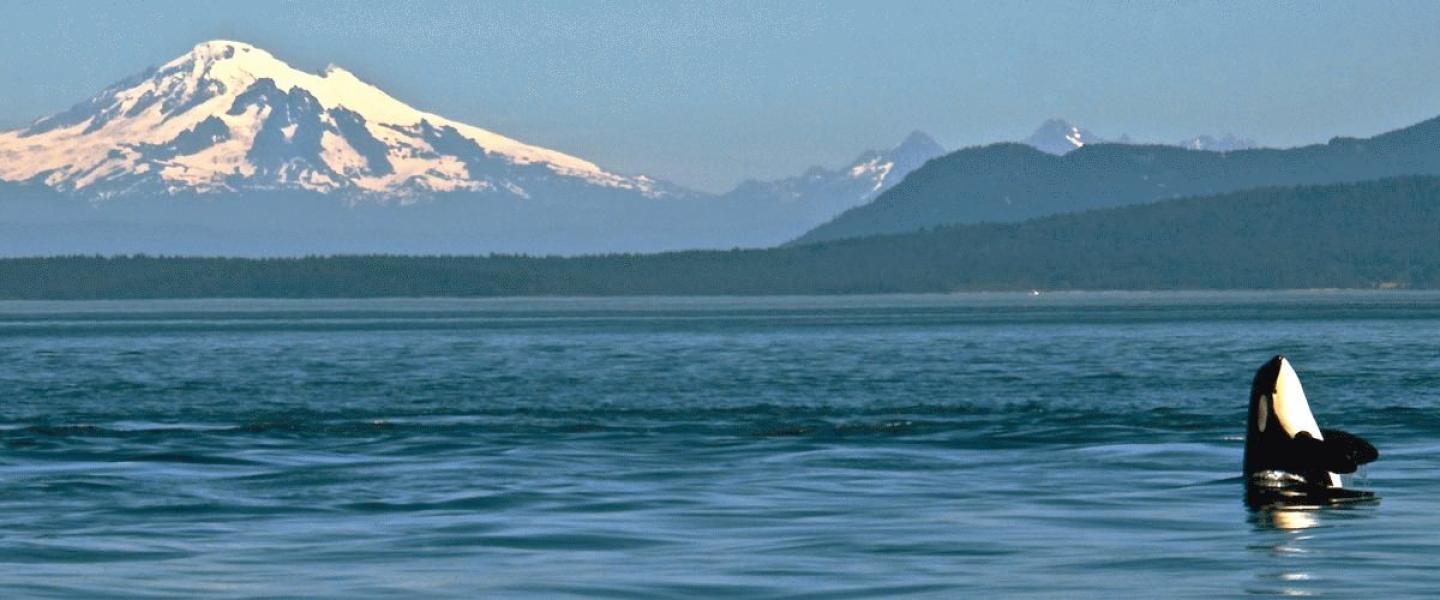
M/V Kestrel has the day's reports! Today, we got to see two very interesting species of baleen whale, one a bit uncommon and the other fairly elusive. Because the Salish Sea offers the chance to see an abundance of wildlife, we never know what we're going to see out here - but days like today are an extra special cherry on top to an already epic whale season!
Have you heard of the minke whale? This small member of the rorqual family is not typically at the top of everybody's list when they're out whale watching, but it sure as heck should be! We see the common minke whale here in the Salish Sea, which is found throughout the northern hemisphere. They can reach up to 30 feet in lengths, and can reach sexual maturity as early as 3 years old. Their gestation period is just under a year, and they'll typicall mate in the winter, meaning we see a lot of newborn calves around January!
On our trip today, we had the chance to see some particularly active minkes feeding in a frenzy near a bait ball, which is basically a large school of fish that can be located above the surface to us as whale watchers. We're able to detect a bait ball because we usually see a massive flocks of birds that are also feeding on the fish that the minkes are nomming on - exactly what we saw today. Hundreds of birds were swooping down and around, picking small fish out of the water while somewhere between 3-5 minkes zoomed around just under the surface, lunging and popping up quite frequently among the feasting birds.
These whales are particularly interesting in the way that they've sorted out their undersea dining zones. Research has been conducted by the Northwest Minke Whale Project that suggests that these whales actually segregate into separate areas and return to these areas year after year - like they have loyalty to a particular region. This may be related to specialized foraging strategies among various minkes, and we certainly had the chance to see some interesting techniques today. The minkes we saw were certainly busy feeding on the large schools of fish typically consumed by baleen whales. At one point, we saw the entire head of a minke pop up out of the water! It was the most minke activitiy I've seen this season, by far.
On our way back to Friday Harbor, we also had the chance to swing over by Lopez Island and catch up with a couple of gray whales! These are a touch larger than the minkes at 40-45 feet, but they feed in an entirely different way. They actuall sift through silt and mud on the ocean floor to feed on organisms down there, and they end up trailing plumes of mud behind them when they come up to breath. Talk about messy eaters! The two we saw were up at the surface about every four minutes, allowing us to get some great views.
How exciting to see both of these species out and about today. Come see for yourself!
Lauren Fritz
Whale Watch Naturalist
San Juan Safaris